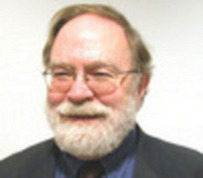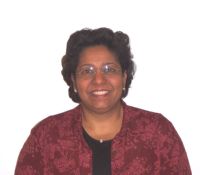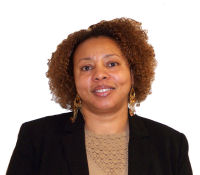Information for Prospective Graduate Students

The College Park Campus of the University of Maryland, located
in the suburbs of Washington, D.C., consists of 1300 acres of Georgian
style buildings, trees, grassy malls and recreation fields. Although the
University of Maryland was established in 1920, the College Park Campus
was opened in 1859 and the Graduate School was established in
1919. The university currently has approximately 9,000 graduate
students enrolled in 87 master's degree programs and 68 doctoral
programs. Since 1937 the Mathematics Department has
awarded more than 550 Ph.D. degrees.
The rapid growth of the University and the Mathematics Department has
accompanied the development of the state as a whole. More importantly the
Washington metropolitan area has become a center of intense scientific
activity, in which the University of Maryland plays an important role as
a focus for advanced research.
The Mathematics Department has risen to a
high national ranking with
a distinguished graduate faculty of about 65 persons whose research interests
span many vital areas of the mathematical sciences. Several members of
the Department also hold joint appointments with the
Institute of Physical
Science and Technology, an interdisciplinary research center at the
University.
 The Department of Mathematics is housed in the Mathematics
Building
on Campus Drive near U.S. Route 1. The Mathematics Department shares this
building with the Engineering
and Physical Sciences Library, giving graduate
students convenient access to the books and journals of mathematics as
well as those of physics and engineering.
The Department of Mathematics is housed in the Mathematics
Building
on Campus Drive near U.S. Route 1. The Mathematics Department shares this
building with the Engineering
and Physical Sciences Library, giving graduate
students convenient access to the books and journals of mathematics as
well as those of physics and engineering.
The Physics, Chemistry, and Engineering Departments occupy adjoining
buildings. The Computer Science Department, the Institute for Physical
Sciences and Technology, the Institute for Systems Research and
the Academic Information Technology Services buildings are a few minutes
away.
The Department has a network of about 150 personal computers running
linnux, and other machines, all connected with the campus network.
The Department houses two
general-purpose computer labs for graduate students, plus a
Mathematical Visualization Lab and a computer classroom.
Other computer labs are scattered across campus.
The Campus has many recreation facilities including swimming
pools, tennis and racquet-ball courts, gymnasia, art galleries, three theaters
and two cinemas.
Though the College Park Campus is on the outskirts of Washington,
D.C., it is also within a few minutes drive of the pleasant rural
Maryland countryside. Downtown Washington, D.C. offers its many
cultural attractions such as the Smithsonian
Institution, the National Gallery of Art, and the Library of Congress.
The state capital of Annapolis
with its picturesque waterfront, Naval Academy and boating facilities
is twenty-five miles away as are beaches on the Chesapeake Bay.
Further to the east are the ocean resorts of Maryland and Delaware and
to the west the Appalachian Mountains with ski resorts and public
parks for hiking and camping. The city of Baltimore, with its rich
ethnic heritage and culture, is only thirty miles from College Park.
The Department of Mathematics
Chair:

James Yorke
Associate Chair for Graduate Studies:

Larry Washington
Coordinator (for Graduate Student Academic Matters):

Celeste Regalado
Administrative Assistants for the Graduate Program:
 Haydeé Hidalgo and Haydeé Hidalgo and
 Linette Berry Linette Berry
The Mathematics Department is involved with three programs
of graduate study. In addition to the Mathematics graduate program
(MATH), the Department offers a program in Mathematical Statistics
(STAT) and significantly participates in an
interdisciplinary program
in Applied Mathematics and Scientific Computation (AMSC).
The Mathematics Department offers a program of graduate study
in mathematics which is rich and varied. Through course work and the writing
of a thesis, the student is prepared for a career in teaching and research
in the mathematical sciences and their applications.
Graduate Students in any one of these programs can take courses in
all three, and it is relatively simple for a student to transfer from one
program to another.
Graduate Studies also play an important role in the research and teaching
activities of the Department. The full-time graduate student enrollment
in all three degree programs is approximately 230, of which one third are
women, and one third are foreign, coming from all over the world. Many
part-time students with professional positions in the local area are also
enrolled.
Course offerings in the Department of Mathematics are organized
into general fields: Algebra and Number Theory, Complex Analysis, Logic,
Numerical Analysis, Ordinary Differential Equations and Dynamical Systems,
Partial Differential Equations, Real and Functional Analysis, Statistics,
Probability, and Topology and Geometry. First-year graduate courses are
taught every year in each field with an average enrollment of 15-25 students.
In these courses the student acquires the basic techniques necessary for
research in mathematics and for work in applied areas. In addition, many
advanced courses are given on specialized topics which introduce the student
to areas of active research. Because of the large number of faculty members,
about twenty advanced graduate courses are offered each semester.
A list of faculty research interests can be seen
here
The department offers a wide range of advanced undergraduate
courses which provide an introduction to many areas of mathematics
including probability, topology, numerical analysis, logic, and
differential equations.
Degree requirements for the three programs are essentially the
same. The student studying for the Ph.D. must first take a set of written
qualifying examinations over material from three of the basic first year
graduate courses. After successfully passing these examinations at the
Ph.D. level, the student takes more advanced courses in a particular area
to prepare for thesis work. A total of 36 credits (12 one semester courses)
is needed for the Ph.D. Admission to candidacy for the Ph.D. is granted
when the student passes an oral examination over the more advanced course
work. The dissertation is then written under the direction of a member
of the faculty. The final thesis defense is an oral examination by a committee
of faculty members. In addition, there are foreign language requirements
which vary somewhat from one program to another
Expectations of Doctoral Students and Faculty
are included in the
Policies of the Graduate Program in Mathematics.
The M.A degree is granted to students who take 24 credits of course
work and write a master's thesis. The non-thesis option for the M.A. requires
the student to take 30 credits of course work and and to pass the written
qualifying examinations at the master's level.
The Department of Mathematics at the University of Maryland is not
divided into an "applied" department and a "pure"
department. As can be seen from the faculty listing, the research
interests of the faculty range from areas such as number theory,
topology and logic to partial differential equations, probability
theory and numerical analysis. The faculty share the common belief
that good mathematics in all areas requires imagination coupled
with rigorous thinking. The graduate programs try to instill this
philosophy in the student, as well as provide a strong, broad
background in basic areas of mathematics. The diversity of research
interests represented by the faculty exposes students to many points
of view, enabling students to see the same problem treated with quite
different techniques.
The curriculum in the Mathematics Program is determined in part by
the student's choice of written qualifying examinations. To help prepare for these
written examinations, the department offers beginning graduate courses.
After taking these basic courses, the student
studying for either the Ph.D. or M.A. can choose from an
exceptionally broad range of courses in advanced topic. The Office of
Graduate Studies is happy to advise students. Because of the wide
scope of faculty research interests, students can find faculty members
with whom a thesis can be written.
In addition to attaining a strong background in basic areas of mathematics
and developing skills as research mathematicians, students are encouraged
to become effective teachers and communicators of mathematics. Many graduate
students obtain teaching experience as teaching assistants. Graduate teaching
assistants go through a week of intensive teacher training before the beginning
of their first semester of teaching and are assigned a supervisor during
the first year to help them deal with problems and develop their skills.
In their first semester, new teaching assistants attend a weekly course
on how to teach effectively. The Mathematics Department is actively involved
in the current national effort to improve undergraduate mathematics education,
including calculus reform and the use of technology in the classroom. Graduate
teaching assistants have the opportunity to participate in these programs
and learn innovative teaching techniques.
Requirements of the MATH graduate program are described in
"Educational
Policies of the Mathematics Graduate Program."
The Mathematical Statistics Program STAT
 Director:
Paul Smith
Director:
Paul Smith
Statistics and probability are areas concerned with the modeling and
interpretation of data generated by random phenomena. The
STAT
program combines training in the real world application of statistics and
its mathematical foundations.
Graduate students in statistics at Maryland combine courses in statistics,
probability, applied statistics, and mathematics in a program leading to the M.A. and Ph.D.
degrees in Mathematical Statistics. The course of study may emphasize statistical
methodology, mathematical theory of statistics, probability theory, or
stochastic processes, depending on the interests of the student. All programs
include core courses in mathematical statistics and probability.
An applied statistics option is offered for both Ph.D. and Master's students planning
a career in industry or government. Coursework in applied statistical topics
may be combined with the study of computational methods or statistical
applications in other disciplines to prepare for professional employment
in statistics.
Several statistics courses are offered on a regular basis during the
late afternoon and early evening hours to enable part-time students to
obtain a Master's degree in Statistics. All after hours courses are taught
by regular members of the University of Maryland faculty.
The Statistics program, in cooperation with the Computer Science Center,
operates the Statistics Laboratory. It provides statistical expertise and
data analysis to University and external researchers. The Laboratory offers
students an opportunity to apply textbook knowledge to real life situations.
More information on the STAT graduate program is
described in STAT Program
The Applied Mathematics and Scientific Computation Program
AMSC
For information on the AMSC graduate program, see the
AMSC Website.
Research Climate
An effective graduate program requires a climate of research activity
in which the student is constantly exposed to the most recent developments
in mathematics.
The
research interests of the faculty span a wide
range of topics.
The Mathematics Department is a very dynamic research center,
currently running about 14 seminars
in various specialized areas that meet on
a weekly basis. Speakers from around the world are invited to these seminars
to complement the contributions of the resident faculty and graduate students.
The Friday colloquium is
devoted to lectures by distinguished faculty members
and visitors on their latest research projects. In addition,
we have a graduate minicourse
series to introduce beginning students to the broad range of research and
professional activities available to them, and
"Research Interaction Teams" to get students
involved in research early in their graduate careers.
In addition the department has a tradition of hosting distinguished
long-term visitors who give series of seminar talks or teach semester-long
courses.
Many faculty members and students regularly interact with
the faculty of other departments and institutes, such as the physics
and computer science departments, the Institute for Physical Science
and Technology, the Institute
for Systems Research, and the Institute for Advanced Computer Studies.
The STAT Program conducts a seminar program featuring topics in
mathematical
statistics, applied statistics and probability. Seminar speakers include
faculty members from other universities and researchers from the many
government
laboratories in the Washington area. Statistics faculty cooperate frequently
with applied scientists in the federal research establishment on statistical
problems arising in areas such as medicine, engineering, agriculture and
biology.
Computing Resources
The Mathematics Department is committed to providing easy access for
graduate students to a variety of networked computers. The department
currently maintains two computer labs that are reserved primarily
for use by graduate students. They contain
a variety of SUN workstations and Pentium
PCs. In addition, several SGI machines and DEC workstations are
devoted to high-end computing and are available to graduate students
whose work involves substantial computation. The Mathematics
Department computer network provides access to a variety of up-to-date
software packages, including Mathematica, Maple, Matlab, Splus, TeX,
and much more.
Applications
Interested in applying to the Mathematics, Applied
Mathematics or Statistics graduate program? Questions?
Go on to the admissions page or
send e-mail to
mathgrad@deans.umd.edu with
your questions or requests for application forms.
Last modified: April 17, 2006 by TZH
|





